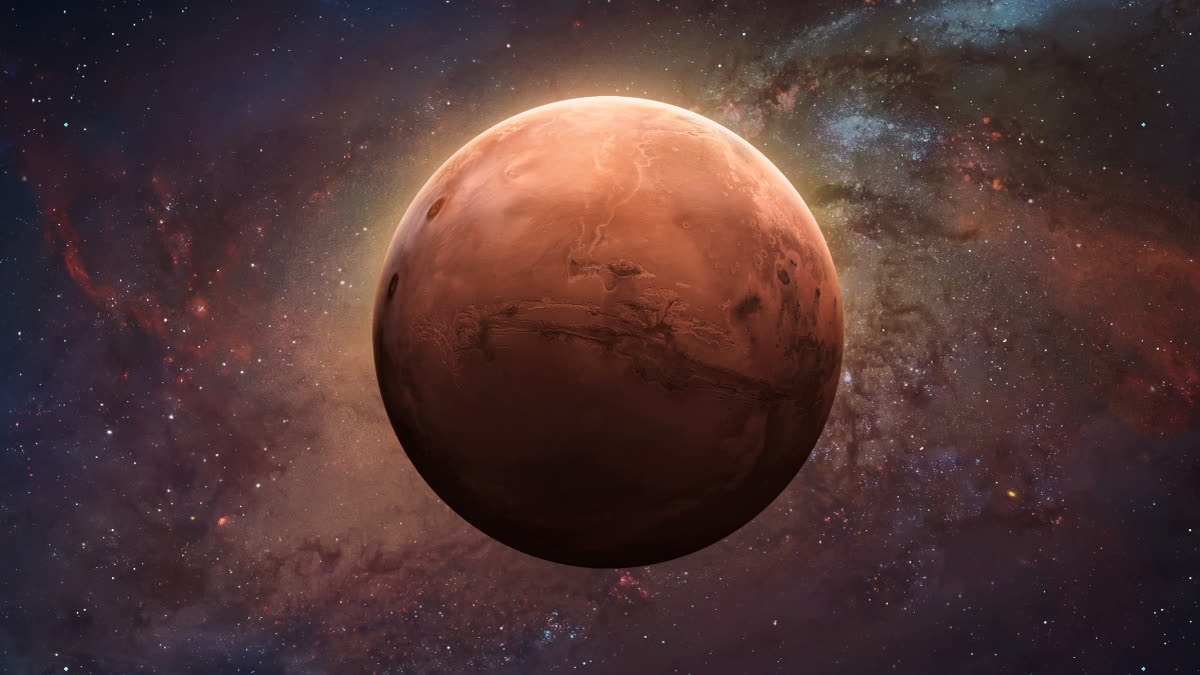Hyderabad: Red Planet Day is observed annually on November 28 to honour Spacecraft Mariner 4's launch. Mars is also known as the red planet. Spacecraft Mariner 4 made the first successful flyby of Mars after three prior attempts. Launched on November 28, 1964, the spacecraft arrived on Mars on July 14, 1965. 22 images of the Martian surface were taken during the successful mission.
The first-ever close-up images taken from deep space were these images. We have learned a great deal about the red planet thanks to this mission and a number of subsequent ones. Mars – the fourth planet from the Sun is a dusty, cold, desert world with a very thin atmosphere. This dynamic planet has seasons, polar ice caps, extinct volcanoes, canyons and weather.
Mars is one of the most explored bodies in our solar system, and it's the only planet where we've sent rovers to roam the alien landscape. NASA missions have found lots of evidence that Mars was much wetter and warmer, with a thicker atmosphere, billions of years ago.
Mars was named by the Romans for their god of war because its reddish colour was reminiscent of blood. The Egyptians called it "Her Desher," meaning "the red one".
The Mars Orbiter Mission of India
The Mars Orbiter Mission of India, generally referred to as Mangalyaan, was launched on November 5, 2013. It thereby became the first interplanetary mission of India. It is designed to study the topography, morphology, composition, and atmosphere of Mars.
MOM successfully entered Mars orbit on September 24, 2014, and for India, it was a feather in its cap, becoming the first to achieve this feat on its maiden attempt and at a much lesser cost as compared with similar missions launched by other space agencies. The success of MOM reflected an increasing proficiency on the part of ISRO in handling difficult space missions and built India's credit as a major player in space explorations.
What is Red Planet Day?
On November 28, 1964, the Mariner 4 became the first spacecraft to land on Mars. Red Planet Day commemorates the first time that humans have set foot on the planet. Every year, Red Planet Day is observed. The Mariner 4's main function was to perform fly-bys and collect information on the planet; it was constructed especially to support future space exploration. After completing its mission in eight months, scientists were able to start formulating theories about the red planet. What is now a mountain of research on that planet can be attributed to these findings.
Why is Mars called the Red Planet?
The bright rust colour Mars is known for is due to iron-rich minerals in its regolith — the loose dust and rock covering its surface. Earth's soil is a kind of regolith, too, albeit one loaded with organic content. According to NASA, the iron minerals oxidize, or rust, causing the soil to look red.
Potential for Life: Scientists don't expect to find living things currently thriving on Mars. Instead, they're looking for signs of life that existed long ago, when Mars was warmer and covered with water.
Size and Distance: With a radius of 2,106 miles (3,390 kilometres), Mars is about half the size of Earth. If Earth were the size of a nickel, Mars would be about as big as a raspberry. From an average distance of 142 million miles (228 million kilometres), Mars is 1.5 astronomical units away from the Sun. One astronomical unit (abbreviated as AU), is the distance from the Sun to Earth. From this distance, it takes sunlight 13 minutes to travel from the Sun to Mars.
Orbit and Rotation
- As Mars orbits the Sun, it completes one rotation every 24.6 hours, which is very similar to one day on Earth (23.9 hours). Martian days are called sols – short for "solar day." A year on Mars lasts 669.6 sols, which is the same as 687 Earth days.
- Mars' axis of rotation is tilted 25 degrees with respect to the plane of its orbit around the Sun. This is another similarity with Earth, which has an axial tilt of 23.4 degrees. Like Earth, Mars has distinct seasons, but they last longer than seasons here on Earth since Mars takes longer to orbit the Sun (because it's farther away). And, while here on Earth the seasons are evenly spread over the year, lasting 3 months (or one-quarter of a year), on Mars the seasons vary in length because of Mars' elliptical, egg-shaped orbit around the Sun.
- Spring in the northern hemisphere (autumn in the southern) is the longest season at 194 sols. Autumn in the northern hemisphere (spring in the southern) is the shortest at 142 days. Northern winter/southern summer is 154 sols, and northern summer/southern winter is 178 sols.
Moons
Mars has two small moons, Phobos and Deimos, that may be captured asteroids. They're potato-shaped because they have too little mass for gravity to make them spherical. The moons get their names from the horses that pulled the chariot of the Greek god of war, Ares.
Rings
Mars has no rings. However, in 50 million years when Phobos crashes into Mars or breaks apart, it could create a dusty ring around the Red Planet.
Which country went to Mars first?
In 1960, the Soviet Union was the first country to attempt a flyby of Mars with 1M (known in the West as Marsnik) but the mission was unsuccessful. The USA was the first nation to reach Mars successfully when Mariner 4 made a flyby of the Red Planet in July 1965.



